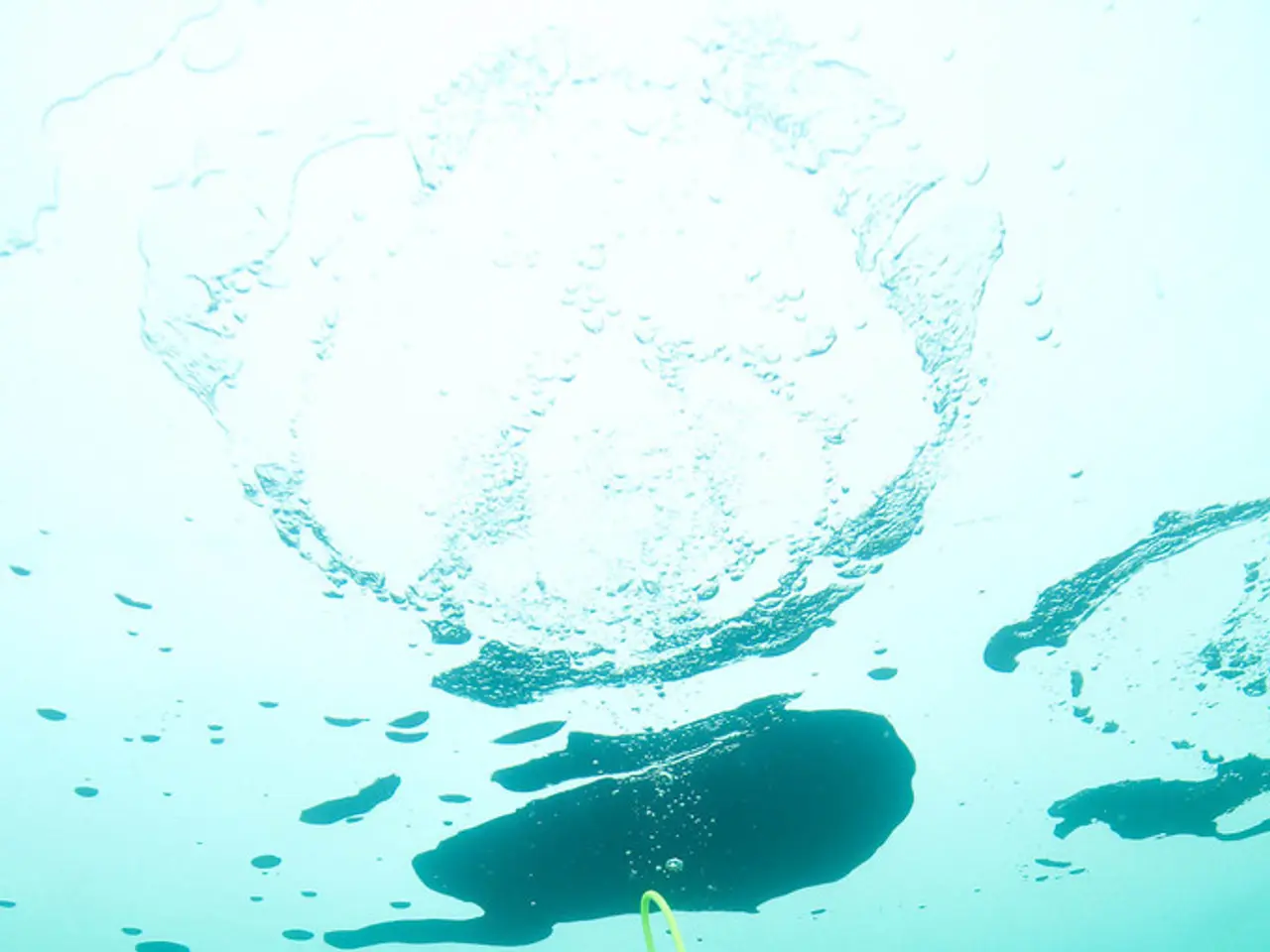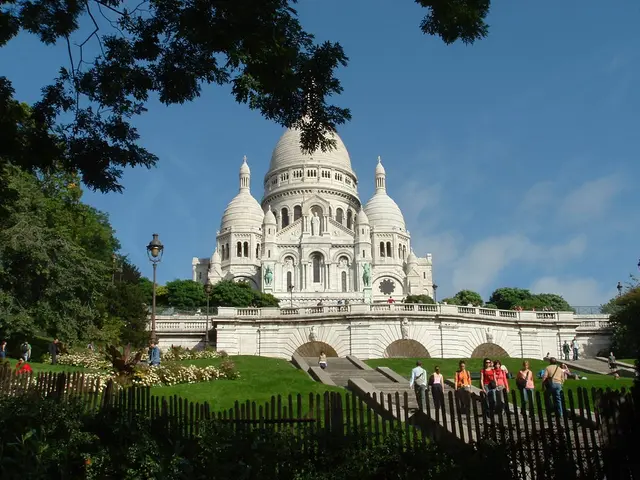Strategies for Escaping a Productivity Rut through Aggressive Action
In the vibrant waters of Raja Ampat, a paradise known for its thick fish schools, large coral gardens, and high biodiversity, capturing stunning underwater photographs can be both a rewarding and challenging experience. Here are some tips to help you isolate your subject and manage people in crowded diving locations.
Firstly, getting low and shooting at eye level with your subject creates a natural and engaging image that helps isolate the subject from the background. This technique, along with using focused lighting tools like a snoot, can help emphasize the subject by narrowing your strobe light beam onto the subject only, keeping the background dark and uncluttered.
Controlling your settings is crucial. Employ a fast shutter speed and a small aperture to reduce ambient light, which enhances subject isolation and image clarity. Zooming with your fins, not your lens, is another technique that helps reduce the amount of water between you and the subject, resulting in crisper images and better colors.
Planning your shots and being patient is essential. Scout the location and wait for opportune moments to capture your subject without distractions or overlapping divers. Managing interactions with other divers is also important. Politely coordinate with fellow photographers or divers to maintain distance and avoid crowding your subject, ensuring everyone gets good access without disturbing the marine life.
Including environmental context thoughtfully can add impact to your photographs, but avoid clutter by choosing clear compositions and wider-angle lenses only when appropriate. Practicing responsible diving is also key to avoid stirring sediment or disturbing creatures, keeping visibility and image quality high.
When shooting in low visibility, it is necessary to set strobes wide and angled out, and expect to spend time post-processing backscatter out of images. In turbid water with particles of large atomic size, it is advisable to stay with shallow action to make use of ambient light.
In Raja Ampat, sites like Cape Kri, Melissa's Garden, and Karaug Bayangan offer disorganized fish masses and lush coral reefs. For photography in low visibility, it is recommended to switch to macro and shoot for a black background, but larger opportunities may be missed. Close focus wide-angle shots are recommended for locations like these, but the subject and background must be carefully chosen.
Forming an alliance among photographers can help manage people and avoid conflicts while diving in cramped quarters. Agreeing on a time limit for each photographer before allowing another to take their turn on a rare macro subject is suggested to ensure fairness.
The crew/guides on the SMY Ondina, a liveaboard offering incredible hospitality and unique accommodations fashioned using hand-tools from the forests of Sulawesi, are quick to assist and provide an amazing experience. On sunny days in Raja Ampat, God-rays among the speckles in the water can be captured by setting the camera for a fast shutter-speed and shooting at 90° to the sun for dramatic shots.
By following these tips, you can maximize your chances for outstanding underwater photographs in Raja Ampat, one of the world's most biodiverse marine regions.
- In Raja Ampat's vibrant waters, Traveling yields opportunities for capturing Stunning underwater photography.
- A Guide from the SMY Ondina, offering exceptional hospitality, can help enhance your underwater adventure-travel experience.
- To isolate your subject, shoot at eye level and use a focused lighting tool like a snoot for a natural, engaging image.
- A Tutorial on using a snoot may be helpful for underwater Photography beginners.
- A Shark swimming in the bluewater, its silhouette contrasting against the reef, is an ideal subject for underwater Photography.
- A Macro lens is useful in Raja Ampat's lush coral gardens for capturing Close-up images of small marine creatures.
- Watch out for backscatter in low-visibility areas, as it may require Post-processing to remove.
- Coordinating with fellow divers and photographers is crucial to preserve the marine life and enjoy a peaceful Lifestyle underwater.
- Divers should practice responsible diving techniques to maintain high visibility and image quality.
- In crowded locations, consider shooting at a wider angle while thoughtfully including environmental context to add impact to your photographs.
- The Reefs of Raja Ampat offer Adventure-travel opportunities for both photography enthusiasts and diving veterans alike.




